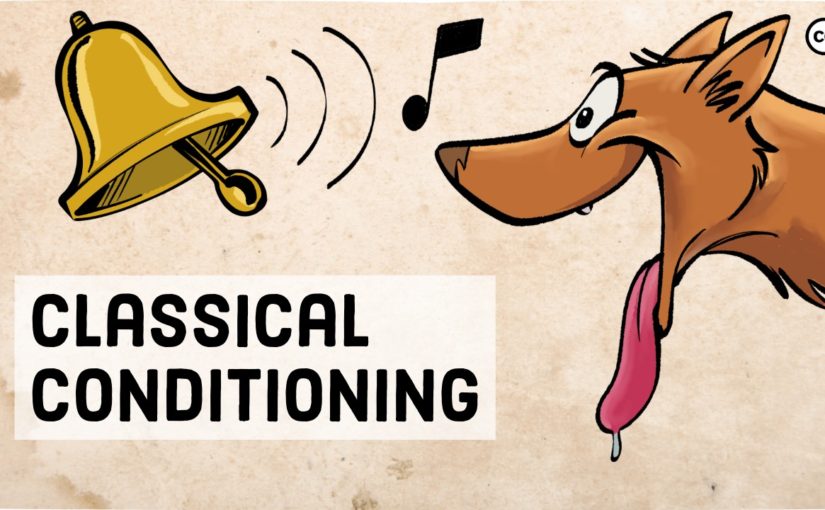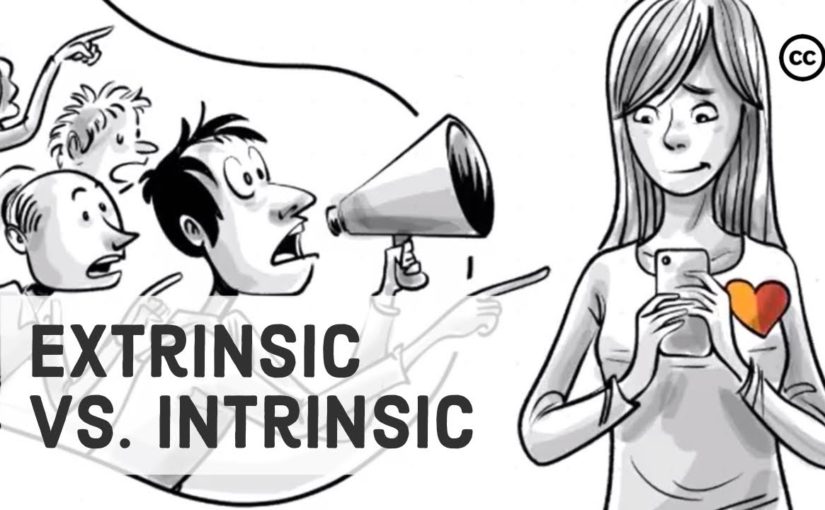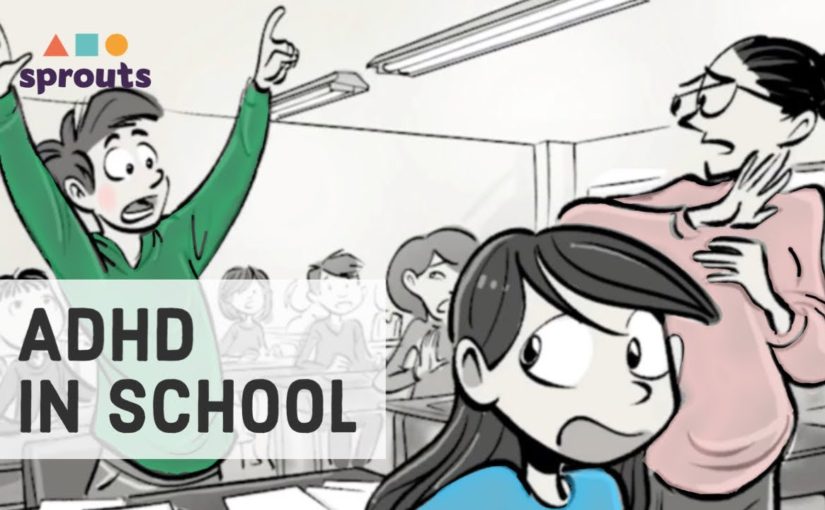
Cognitive Behavioral Therapy (CBT)
Cognitive Behavioral Therapy is based on the idea that certain situations trigger false core beliefs that negatively impact our thoughts, emotions, behavior, and physical reactions. Once we learn how to identify what situations bring upon such destructive thoughts, we can practice developing new interpretations.That will then change our pattern of reaction.The therapy is widely used to help people with phobias, depression, anxieties, or addictions To show how it works.Let’s look at Lily a teenage girl who hates going to school due to her fear of being judged and humiliated.In her first session, the therapist tries to build trust and explains how CBT functions since the better Lily understands the process, the more likely it is that the therapy is effective.The therapist also illustrates how our brain in specific situations follows a fixed path of reason, which gets stronger after years of having the same thought process.Many of our destructive behaviors are based on false core beliefs, thoughts that objectively don’t make sense.We acquired these false beliefs when we were too young to interpret others correctly Throughout the therapy.Lily will try to unlearn these false beliefs and create new mental pathways that will replace the false beliefs she holds of herself with more realistic thoughts Once Lily understands the process.The counselor begins to ask questions following the Socratic method, a form of argumentative conversation that stimulates critical thinking to draw out false ideas and underlying assumptions. Would you like to tell me why you are here today Start the therapist, Because I think I’m not normal Lily responds Therapist1.You appear perfectly normal to me.Can you be more specific Lily1? I think I’m afraid of people Therapist2.So you are afraid of me: Lily2 No Therapist3.Do you feel socially insecure Lily3? I’m not sure what you mean Therapist4 Tell me how you feel about school Lily4.I’m scared of going because they think I’m stupid Throughout the interview.The counselor takes notes of Lily’s, answers and identifies the signs of social anxiety based on a false core belief.Lily believes she is stupid For homework.Lily should practice introspection The goal is to find out which situations trigger her negative thoughts.She gets a learning journal to keep a record of all triggers and other observations, such as self-talk or interpretations of particular events and people. During the following week.Lily becomes more aware of her thoughts and the physical reactions they trigger By paying attention to her feelings.She identifies a specific pattern that occurs every time during math class.The moment her teacher begins to ask questions.Her heart starts racing and her palms get sweaty.She worries about having to answer the question about making a mistake about looking dumb in front of all the others In her second session Lily shares her observations and the therapist helps her realize that her cognitive behavioral patterns are false.First, her math grades are great, so she should feel anything but stupid.Second, she explains that there are always more interpretations tofthe same thing.What to her may look like her stupid face to others.She may just look unhappy about having to answer The reason she is afraid of what people think is a form of social anxiety, a completely irrational cognitive, behavioral response 5 7. As the sessions continue, the therapist suggests three practical strategies Through Journaling Lily records, her negative beliefs and reformulates them into positive ones.She can replace them with Constructive Self-talk, which helps her to replace a critical voice with a positive one, she starts exposure exercises, which means Lilly deliberately puts herself in situations where she becomes the center of attention Along the way.The two set goals that are specific, measurable, achievable, realistic, and time-based SMART goals, give her control over how she progresses, thus helping her to gain confidence in herself Over time and with a lot of practice her brain builds new neural pathways that lead to different more Neutral reactions to the same old triggers And one day Lily may even enjoy the thrill of speaking in front of her class.Her interpretation of the situation is more realistic and more aligned with those of the others.CBT was initially developed in 1964 by Aaron Temkin Beck Beck, who hypothesized that people’s feelings are determined by the way they interpret situations rather than by the situations per se About depression.He once said: If our thinking is bogged down by distorted symbolic meanings, illogical reasoning, and erroneous interpretations, we become in truth blind and deaf.This and all other Sprouts videos are licensed under Creative Commons.That means teachers from all around the world can use them in classrooms.Online courses or to start projects, and today thousands already do To learn how it works and download this video without ads or background music check out our website or read the description below.If you want to support our mission and help change education visit our Patreon that’s Patreon com sprouts,As found on YouTubePythagorean Betting System ꆛシ➫ The Pythagorean Betting System is my ultimate way to find out which team is undervalued and overvalued in all the major professional leagues, including NBA, MLB, NFL, and NHL. 8 months later, the user says: “The Pythagorean Betting System is … 18:07 The latest testimonial from Anders in Norway. He says: “The Pythagorean Betting System is amazing!… Every day you’re not inside, you’re losing money! God bless you Champ. It’s been an amazing ride!”





 At this point, Tom knows a lot about himself
but doesn’t connect well with others. To him, people seem to follow rules
without questioning them— just like sheep. Integrating into the society is difficult at
this point and he begins to search for utopia. Mira makes it into a top medical school where she
realizes, she’ll never be top of the class again. Once that place seems out of reach,
her motivation drops and she wonders if medicine interests
her. Since quitting is no option, she takes up a second major and
runs for student council president. Soon Mira will know everything about what
others expect, but nothing about what she likes for herself. All her life she has just
listened – driven by external feedback loops. At this point, she’s also lost the ability to
question the norms of the society she grew up in. Listening to our hearts can tell us who we
are, but not how to be happy among others. Listening to others can motivate us to be
a part of their world, but doesn’t teach us if that world is ours. This is why it’s
probably good for the two to go together. Then we can learn what we want, and
get the feedback that we need to stay motivated to explore
new roads into a better society. A large body of research shows that balancing
the two forces is not straightforward. One meta-analysis of 128 studies examined the effects
of extrinsic rewards on intrinsic motivation. While most rewards significantly
undermine our intrinsic interest, positive feedback — which is an extrinsic
motivator — inspires us to keep going. Put simply, honest words of
encouragement get us going, while money or gifts undermine our inner drive. What about you? Do you listen to your
heart or the voices of society? And from your personal experience, which
of the two eventually takes your decision? Share your thoughts and check the
description to dive deeper into the topic. Sprouts videos are published under the Creative
Commons License. That means our videos are free and anyone can download, edit, and play them for
personal use. Public schools, governments, and non-profit organizations can also use them
for training, online courses, or designing new curriculums. To help us stay independent and
support our work, you can join our patrons and contribute. Just visit patreon.com/sprouts.
Even one dollar can make a difference.
At this point, Tom knows a lot about himself
but doesn’t connect well with others. To him, people seem to follow rules
without questioning them— just like sheep. Integrating into the society is difficult at
this point and he begins to search for utopia. Mira makes it into a top medical school where she
realizes, she’ll never be top of the class again. Once that place seems out of reach,
her motivation drops and she wonders if medicine interests
her. Since quitting is no option, she takes up a second major and
runs for student council president. Soon Mira will know everything about what
others expect, but nothing about what she likes for herself. All her life she has just
listened – driven by external feedback loops. At this point, she’s also lost the ability to
question the norms of the society she grew up in. Listening to our hearts can tell us who we
are, but not how to be happy among others. Listening to others can motivate us to be
a part of their world, but doesn’t teach us if that world is ours. This is why it’s
probably good for the two to go together. Then we can learn what we want, and
get the feedback that we need to stay motivated to explore
new roads into a better society. A large body of research shows that balancing
the two forces is not straightforward. One meta-analysis of 128 studies examined the effects
of extrinsic rewards on intrinsic motivation. While most rewards significantly
undermine our intrinsic interest, positive feedback — which is an extrinsic
motivator — inspires us to keep going. Put simply, honest words of
encouragement get us going, while money or gifts undermine our inner drive. What about you? Do you listen to your
heart or the voices of society? And from your personal experience, which
of the two eventually takes your decision? Share your thoughts and check the
description to dive deeper into the topic. Sprouts videos are published under the Creative
Commons License. That means our videos are free and anyone can download, edit, and play them for
personal use. Public schools, governments, and non-profit organizations can also use them
for training, online courses, or designing new curriculums. To help us stay independent and
support our work, you can join our patrons and contribute. Just visit patreon.com/sprouts.
Even one dollar can make a difference.

 Others become impatient, give up or distance themselves. after he
is diagnosed and receives support through concrete steps, things begin to
get better: at school, he is seated next to a supportive student in the front row
of the class, he gets a notebook that lists all his assignments to help him
remember and to make homework easier to track he receives it for all subjects
only once a week. to relax he is allowed to use fidget objects during lessons and
take short breaks when needed. after school he practices speaking and
listening routines with the specialist. additionally, his dad bikes with him to
school every morning and in the afternoon he is allowed to play the ball
as long as he wishes. for severe cases of ADHD prescription drugs are often
prescribed. before that happens children like Leo need to undergo a
professional age-appropriate diagnosis by a child psychologist who will try to
look below the surface. ADHD could just be the tip of the
iceberg the root cause might be drama at home, bullying at school, poor sleep or
the wrong diet. Sir Ken Robinson told the story of Gillian Lynne, an 8-year-old
girl that was said to have a learning disorder. she could not concentrate and
never sat still. when she was brought to the specialist who didn’t subscribe any
therapy but instead played music on the radio, the girl started dancing. he then
told her mother: “Gillian isn’t sick, she’s a dancer. take her to a dance school!”
Gillian Lynne later became a famous dancer and then responsible for some of
the most successful musicals in Broadway history. please share your thoughts in
the comments below. if you are hyperactive or if you are diagnosed with
ADHD please tell us about your coping mechanisms so we can learn more about it
from reading your insights. if you want to support our Channel, enabling us
to make more such videos, visit patreon.com/sprouts and check out
what we do.
Others become impatient, give up or distance themselves. after he
is diagnosed and receives support through concrete steps, things begin to
get better: at school, he is seated next to a supportive student in the front row
of the class, he gets a notebook that lists all his assignments to help him
remember and to make homework easier to track he receives it for all subjects
only once a week. to relax he is allowed to use fidget objects during lessons and
take short breaks when needed. after school he practices speaking and
listening routines with the specialist. additionally, his dad bikes with him to
school every morning and in the afternoon he is allowed to play the ball
as long as he wishes. for severe cases of ADHD prescription drugs are often
prescribed. before that happens children like Leo need to undergo a
professional age-appropriate diagnosis by a child psychologist who will try to
look below the surface. ADHD could just be the tip of the
iceberg the root cause might be drama at home, bullying at school, poor sleep or
the wrong diet. Sir Ken Robinson told the story of Gillian Lynne, an 8-year-old
girl that was said to have a learning disorder. she could not concentrate and
never sat still. when she was brought to the specialist who didn’t subscribe any
therapy but instead played music on the radio, the girl started dancing. he then
told her mother: “Gillian isn’t sick, she’s a dancer. take her to a dance school!”
Gillian Lynne later became a famous dancer and then responsible for some of
the most successful musicals in Broadway history. please share your thoughts in
the comments below. if you are hyperactive or if you are diagnosed with
ADHD please tell us about your coping mechanisms so we can learn more about it
from reading your insights. if you want to support our Channel, enabling us
to make more such videos, visit patreon.com/sprouts and check out
what we do.